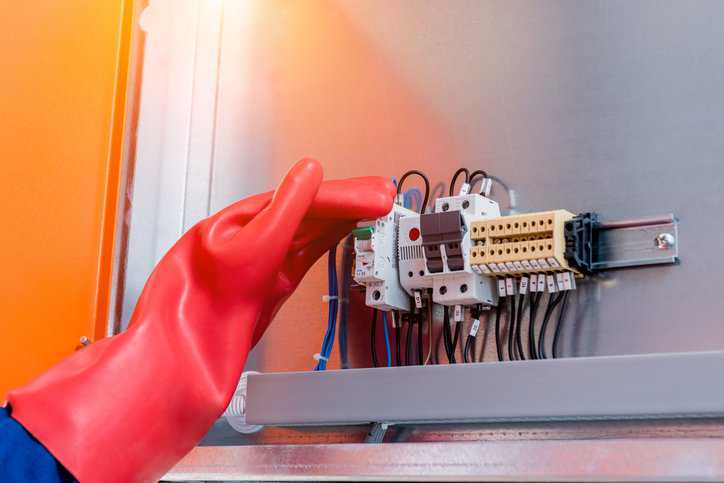5.6% of workplace fatalities were caused by contact with electricity—one of the leading causes of fatalities in the workplace. To keep workers safe, there are several personal protective equipment (PPE) items that should be utilized in the field. One of the most important lines of defense is rubber goods. Inspecting electrical protective rubber products, such as gloves and sleeves, is crucial for worker safety as it assures that these products remain effective insulators and prevent workers from electric shock. ASTM F1236-25: Standard Guide for Visual Inspection of Electrical Protective Rubber Products provides inspection methods and techniques that may be used to examine electrical protective rubber products for irregularities.
Why Is Testing Rubber Products Essential to Electrical Safety?
Rubber products can include gloves, sleeves, boots, blankets, line hose, and more; they are often worn by people who work with electric power, such as electrical engineers, power plant operators, electricians, substation technicians, wind turbine technicians, and nuclear engineers. These rubber goods serve as personal protective equipment (PPE) and consequently are paramount for worker safety, helping prevent electrical current from entering the body.
The risk of injury and even death from electric shock is drastically reduced by wearing these PPE pieces. Additionally, the proper care and testing of rubber goods helps keep people safe in a dangerous line of work. Complying with ASTM standards like ASTM F1236-25, as well as regular care and maintenance, helps to reduce the risk of injury in the field.
What Is ASTM F1236?
ASTM F1236-25 presents methods and techniques for the visual inspection of electrical protective rubber products. The methods have applications in manufacturing facilities, testing laboratories, and the field where the products are used. The standard also includes descriptions of terms and photographs of irregularities found in these products.
It is not the purpose of ASTM F1236-25 to establish the acceptance level of any irregularity described herein—that should be established by the standard for each product.
Visual Inspection of Rubber Products
Inflation and rolling of rubber products (gloves, sleeves, blanked, line hoses, etc.,) can reveal hidden damage, expose physical imperfections, and allow for a better scan of the rubber. If there are any scratches, punctures, or cracking in the rubber, it does not pass the visual inspection and will not move on to the next step.
Quality Testing of Rubber Gloves
The high-quality testing of rubber products can include:
- Cleaning
- Visual Inspection
- Electrical Testing
- Certification
- Date Stamping
- Packing
- Shipping
Testing and inspection of electrical rubber products not only brings a facility into compliance, it also keeps employees safe from dangerous, even deadly, situations. As such, it is critical to take the time to inspect equipment so workers are properly protected from any electrical danger.
ASTM F1236-25: Standard Guide for Visual Inspection of Electrical Protective Rubber Products is available on the ANSI Webstore.
